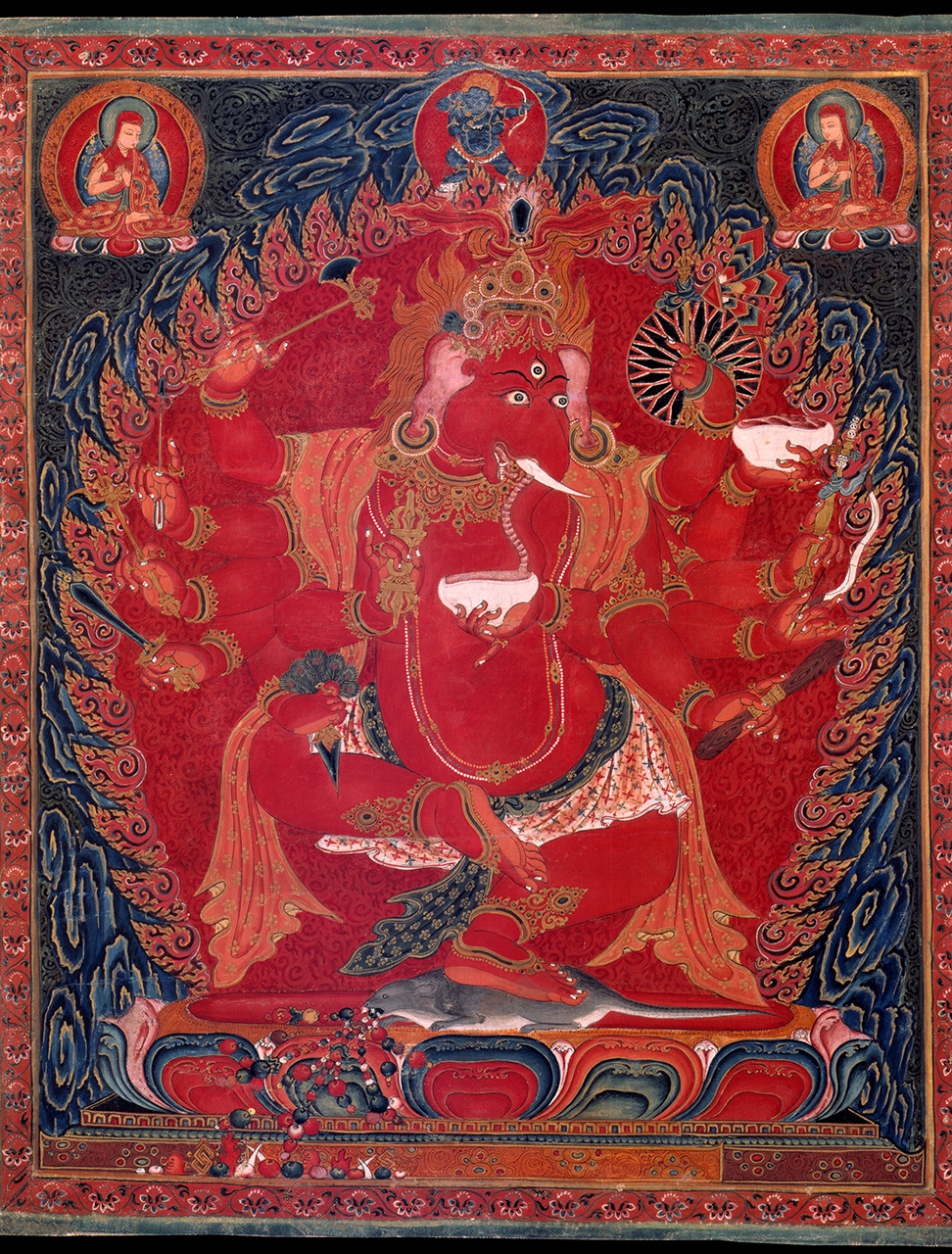
At the center of this work is the red, twelve-armed, dancing Ganapati standing on a jewel-spitting rat, a form of the elephant-headed deity known only in Buddhism. This painting is directly related to a meditation practice in which religious devotees visualize themselves as the “spirit subduing” deity Bhutadamara, shown here immediately above Ganapati, trampling a white elephant-headed deity. As Bhutadamara, they then imagine Ganapati standing in front of them, all in a mountain cave of blue vaidurya rock. This form of Ganapati belongs to a set of three powerful deities known as the “Three Great Red Ones” within the Sakya School of Tibetan Buddhism. Two Sakya lamas, presumably key figures in the transmission lineage of this practice, appear in the upper corners of the composition.
Warm reds dominate the palette and the contrasting cool blues of the stylized rocks framing the central deity and his flames lend vitality to this dynamic figure. Both the surface of the figure’s body nimbus and the dark area outside the rocks are filled with scroll patterns of Nepalese inspiration. Nepalese painting styles were used in areas bordering Nepal and within the Ngor branch of the Sakya School long after they had fallen out of popularity elsewhere.
16 1/4 x 13 1/2 in.
C2005.11.1, HAR89964
- https://dev.rubinmuseum.org/images/content/740/c2005.11.1har89964__zoom.jpg
- https://dev.rubinmuseum.org/images/content/740/c2005.11.1har89964__zoom.jpg

